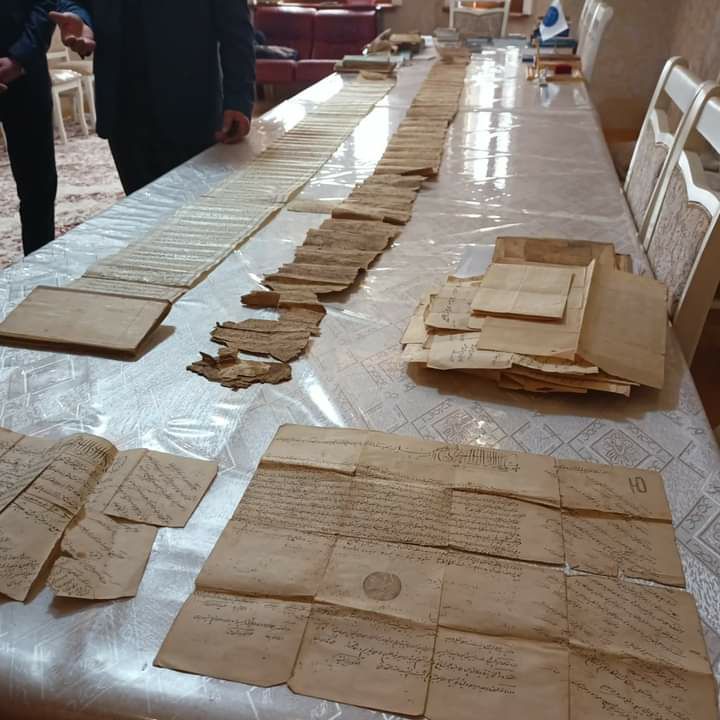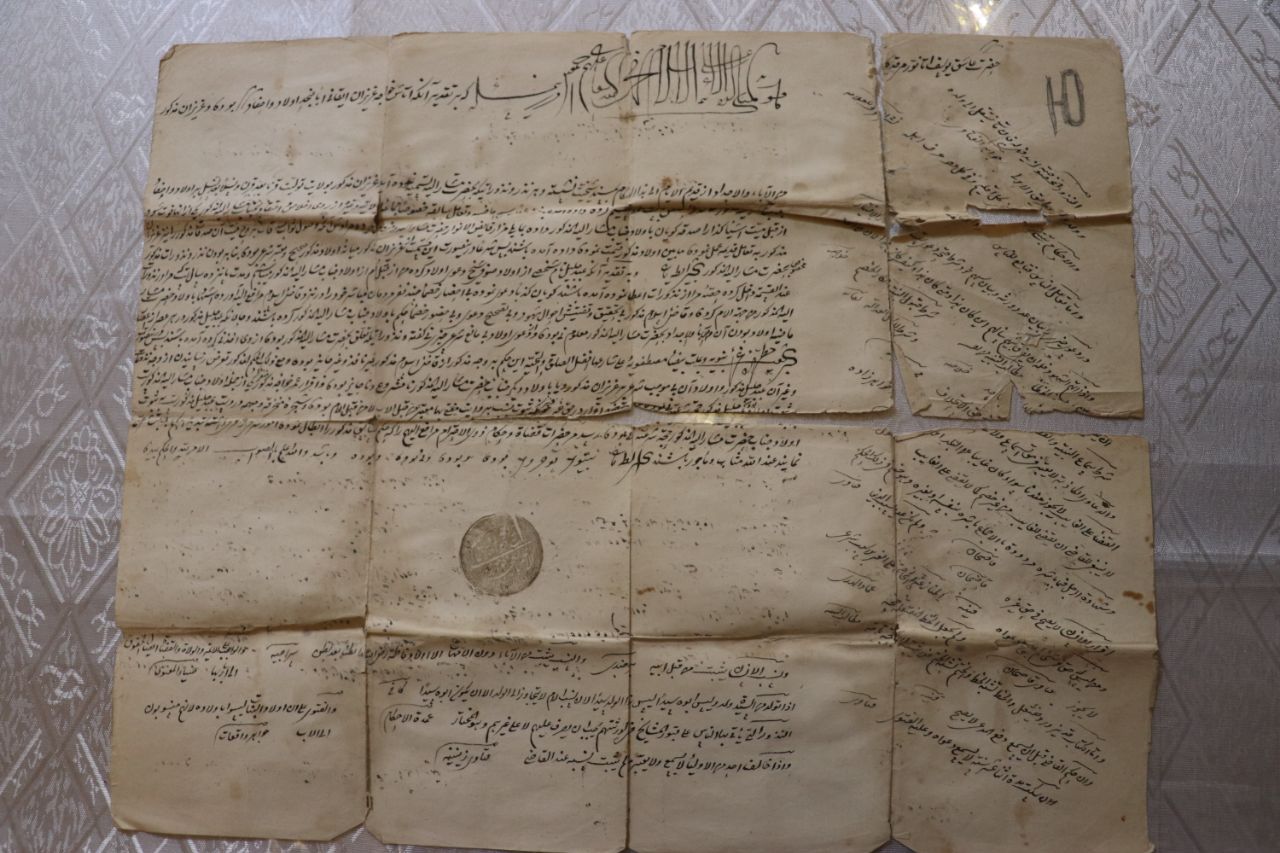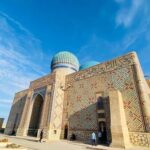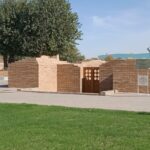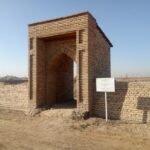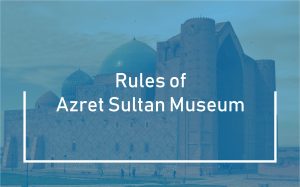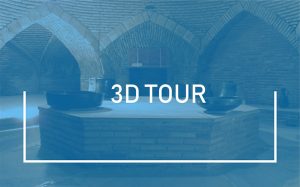A part of the genealogy and specially sealed documents related to the history of Khoja Ahmed Yasawi’s nephew Zhusyp Ata were found.
The length of the manuscript in the Chagatai language is 3.5 meters. Preservation is moderate. The historical artifact was passed down from generation to generation and preserved by the descendants of Zhusyp.
“I kept these papers because my grandfather died when I was 8 and my father when I was 18. My grandfather left them to me. In the last century, these papers were nowhere to be found. The Soviet system did not allow us to use these papers and study our history. It is known that the preservation of historical records is a crime. My grandfather Yuldashkozha was imprisoned in 1933 as a “religious”. My late grandmother and father tried to bury the manuscripts in the ground or in the corner of the tent and try to ignore them. I was not a historian. But I was sure that one day the inherited papers would be in demand. I showed it to people who could read it with interest. The manuscript contains history, not genealogy. From the translation I learned about Zhusyp Ata, khan’s decrees, place names, There is a lot of information about the life of the population. The modern village of Shaga is in the genealogy If we say “Zhaga”, we can see that Ikan village was already engaged in gardening. The chronicle says, “The Ikan people were engaged in gardening and our ancestor Zhusyp greeted Ahmed Yasawi visitors with fruits and 12 different varieties of grapes. It is up to scientists to study these historical facts in detail. As a non-historian, I had a simple study. “, – says Seidalim Yuldashev.
Only folk tales about Zhusyp Ata, who lived in the XII century, can give more or less information. However, as each supplier mixes different data, the legends have become so different.
– “The genealogy of Seidalim Yuldashev, who tells about the history and descendants of the man whom the locals call “Gashyk Zhusyp Ata” because of his sincere love for God, is found in the archives of the old man. Legends tell about the priesthood of Zhusyp Ata, a contemporary, disciple and nephew of Ahmed Yasawi. Some sources say that during the difficult period of anti-religion, the inscriptions about Zhusyp Ata were buried and rotted, and some of them were used as a glass for planting garden seeds . We hope that the manuscript we are familiar with today is the lost heritage. It is possible that the historiography of Zhusyp Ata will reveal his connection with Khoja Ahmed Yasawi and other new discoveries. Specialists will conduct a scientific study on this issue,” said Nurbolat Akhmetzhanov, director of the State Historical and Cultural Reserve Museum “Azret Sultan”.
In the archives of the elder Seidalim there is a document confirming the genealogy of Zhusyp Ata and stamped in several places. “According to the experts who read the document, it includes the general statements and opinions of a group of officials who approved the opinion on the genealogy,” said Seidalim Nurshiddinuly.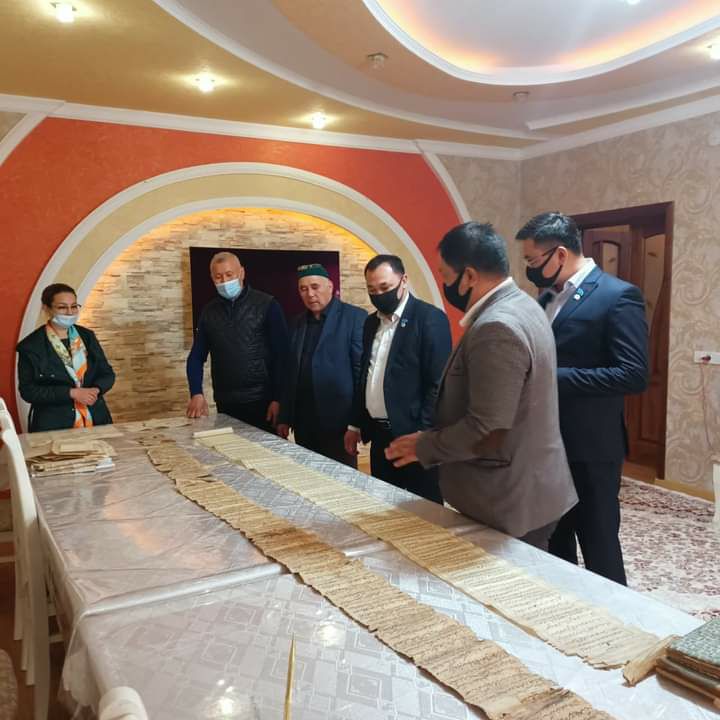
According to legend, Zhusyp was a priest during his lifetime. It is said that the ruler of the city of Sham (Damascus), the Zholbarys Khan, a priest who led ninety-nine thousand monks, crossed the Syrdarya with the help of a stick.
The mausoleum of Zhusyp Ata is located in the village of Eski Ikan, 25 km from Turkestan. Archaeologist-scientist Marat Tuyakbayev conducted the study of the mausoleum in 2005.
– “The mausoleum consists of two rooms, the south-eastern part of which is the Cemetery. It seems that in the beginning (XII century) it was only a 4×4 meter mausoleum dedicated to Joseph. The large room of the mausoleum of Zhusyp Ata was originally built not as a mosque, but as a shrine. Evidence of this is the absence of a mihrab. Probably, there was another mosque nearby. Ceramic finds (XIII- XIX century) shows the need to conduct archeological research on the hills around. the mausoleum and take a plan, aerial photos “, – said Marat Kymyzuly.
In order to collect information about Khoja Ahmed Yasawi, the scientific-educational expedition “In the footsteps of Yasawi” organized by the State Historical and Cultural Reserve-Museum “Azret Sultan” will continue to search for and study the heritage of our ancestor Yasawi in the country and abroad.